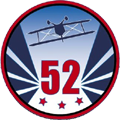Aerobatics
Aerobatic flight is flight that explores all dimensions of the air
and and the limits of performance of an airplane.
The air is a three-dimensional environment
and aerobatic flight explores the vertical as well as horizontal flight
paths through the air. Suitable constructed airplanes can spin, tumble,
slide, roll, loop, and fly through a wide range of airspeeds.
Many aerobatic pilots enjoy aerobatic competition, where pilots fly
sequences of aerobatic figures to exacting standards in front of judges.
Aerobatic competition remains one of the safest venues in which to learn
and improve aerobatic piloting skills.
Other aerobatic pilots simply enjoy the challenge, and the beauty of flying
their airplanes through the full range of maneuvers of which they are
capable. For a brief time, we join the company of eagles.
The remaining portion of this section is primarily directed
toward pilots with an interest in learning aerobatics. It may be of
general interest to others as well.
Getting Started in Aerobatics
Anyone can get-together with an aerobatic instructor (see below) and
get a feeling for aerobatic flight. If you want to participate as an
aerobatic pilot you must first become a pilot. Primary flight instruction
is outside of our domain. You will find excellent guidance from
the Aircraft Owners and Pilots Association (AOPA)
at their Learn to fly
web site.
We suggest the following steps to move from being a pilot to
being an aerobatic pilot:
- Take a ride with an experienced aerobatic pilot or aerobatic instructor
in an aerobatic category airplane. See how you like it.
- Get spin training. This is essential.
- Join IAC and your local IAC Chapter. The information, advice, and fraternity
of the people in these organizations is invaluable.
- Volunteer at regional contests, maybe attend a judges school to learn
the language and notation. Don't be shy.
- Find an airplane suitable for aerobatics. Purchase one, or find a nearby
flight school that will allow you to rent one.
- Get further instruction in your chosen airplane.
- Practice and have fun!
Sources of Aerobatic Instruction
Here are some contacts for beginning aerobatics training.
The sources mentioned are of special merit, located near Chapter 52
in the Northeastern United States, or both.
-
Aerial Advantage. Nashua, NH.
Decathlon rental and instruction. Pitts S2B
instruction. (603)598-3180.
-
Executive Flyers.
Hanscom Field,
Bedford MA. Decathlon rental and
instruction. (718)274-7227.
-
Bill Finagin, CFI. Annapolis, MD.
Spin Training and Advanced aerobatics
training in a Pitts S2C. (410)956-0047.
email wbfinagin@cs.com.
-
Budd Davisson, CFI.
Scottsdale, AZ. Pitts transition and aerobatics training.
(602)971-3991. email
buddairbum@cox.net.
-
Damien Delgazio, CFI.
Andover Flight Academy. Andover, NJ. Tail-wheel
checkout and bush flying. Piper Cub, Aviat
Husky, Stearman. (973)786-6554.
Don't become a statistic
Pilots: Too may times we hear the stories of the down-side of trying aerobatics on your own, and/or in an
airplane not designed for aerobatics.
If you have ever tried aerobatics on your own in a normal or utility category
airplane you owe it to yourself and those who love you to get-together
with an instructor in an aerobatic airplane. Get involved with
IAC and Chapter 52. We can't promise you'll live longer; but, we'll
more than certainly improve your odds.
Aerobatics Checklist
- I have received spin training. I have
practiced from a safe altitude the loss of
control recovery technique. I have
internalized and practiced Beggs-Müller or
required, effective recovery from inverted,
accelerated, flat, and
crossover spins in my airplane.
- My equipment is adequate and well
maintained, including airplane, parachute,
and safety gear.
- I am hydrated, fed, and in good
health. I am taking no medications and have
no medical conditions that counter-indicate
flying.
- My flight has a plan. I have decided
what to do before getting in the airplane and
follow the plan set before takeoff. Plan the
flight; fly the plan.
- I practice everything new above
contest heights, at least 3000 AGL.
- I stick to well-practiced figures at
contest heights.
- I practice over un-congested areas
away from airways, or in waivered airspace.
- I resist the temptation to hot-dog or
show-off around airports, over my friends'
houses, or anywhere else.

